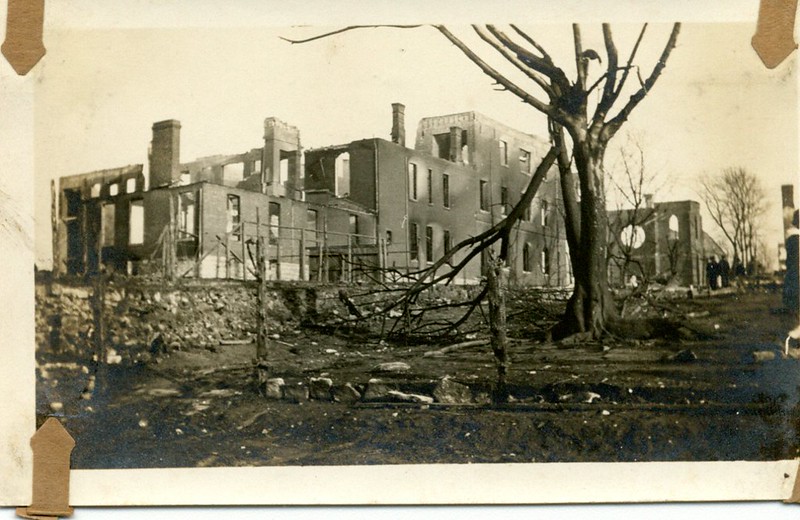
Wednesday morning, March 22, 1916 was a warm, very windy spring day. In Edgefield, a little boy was playing with a ball of yarn when it caught fire from a nearby stove. Panicked, he threw it out the window into the yard, catching the grass on fire. High winds caused the fire to spread quickly to the Seagraves Planing Mill. The mill began to burn. The heat and intensity of the fire grew rapidly in the stacked, dry wood and spread to the homes in Edgefield.
By 11:47 am, high winds fed a fire that was quickly growing out of control. The fire raged through a large part of Edgefield, incinerating every building in its wake. Remarkably, Johnson H. Woods was the only fatality; electrocuted by a live power line. Because of this or anticipating further incidents, the local electric company began cutting power to the neighborhood, hampering fire-fighting efforts.
While Nashvillians attempted to fight back the flames with buckets of water, Nashville Fire Chief Rozetta sent telegraphic messages to every city within several hundred miles, asking them for both engines and men to help fight the fire. Meanwhile, Tennessee Governor Tom C. Rye activated the Tennessee National Guard in Nashville to resist potential looters and assist with rescue work.
For five long hours Nashville fought the fire. Around 4:30 p.m. the flames were finally brought under control, but the damage was severe. More than 600 homes or buildings were destroyed by fire over 35 city blocks.
Newspapers picked up the story that a little boy with a flaming ball of yarn started the 1916 conflagration. True or not, the end result was total losses in the neighborhood of $1.5 million, (34 million today) along with more than 3,000 newly homeless Nashvillians.





